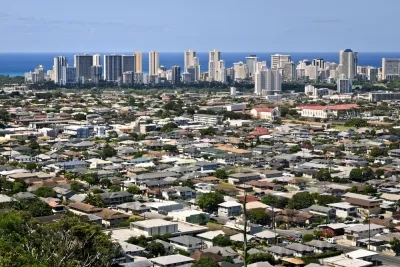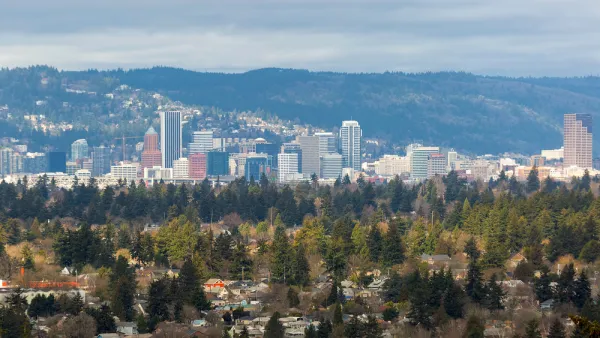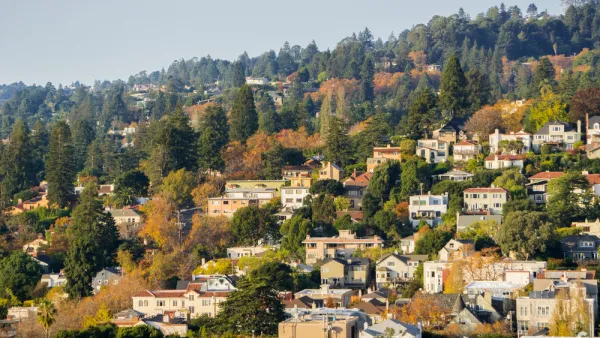Questions of density, and how to add it to single-family neighborhoods, abound in this article focusing on Honolulu and other communities on Oahu.

Stewart Yerton reports for Honolulu Civil Beat on the growing controversies surrounding large homes, built as multi-family dwellings, in traditionally single-family neighborhoods in Oahu.
The article commences with the controversy created by a proposed development for a nine-bedroom house designed to house workers in the Pacific Heights area of Honolulu, home to historic houses and affluent neighbors. Yerton explains the zoning conundrum presented by the home:
The problem is the house was going to be in a quiet residential neighborhood of historic homes. And even if the structure technically met the density criteria allowed by Honolulu’s land-use ordinance, its apparent intended use – as essentially an apartment building or dormitory – simply wouldn’t be allowed in a place zoned for single-family homes.
The development proposal caught the attention of Patrick Smith, president of the Nuuanu/Punchbowl Neighborhood Board, which has an oversight role for the project as part of Oahu’s Neighborhood Board System, established in 1973. "We don’t want our neighborhood having apartment buildings," Smith is quoted as saying in the article.
The neighborhood board succeeded in killing the project, reports Yerton, but the example is far from the only residential development controversy on the island. Residents and policymakers across Oahu are rejecting multi-room houses, "known as 'monster homes,'" amidst a surge in housing costs. The question of how to add density on the island is unanswered, according to the article.
Previous efforts include Bill 7, adopted by the Hawaii State Legislature in 2019. According to Yerton, the bill's incentives for density in the form of redeveloped small homes and under-used, walk-up apartment buildings applies to 7,000 properties in the state but has produced zero new projects. More on Bill 7 is available from an article by Noelle Fujii-Oride for Hawaii Business, published earlier in February 2022.
The source article, linked below, goes into feature depth on the housing development and zoning specifics in Hawaii and Oahu, as well as one architect who recently managed to navigate the Bill 7 "gauntlet."
FULL STORY: More Housing In Honolulu Means More Density. Are Monster Homes The Only Way?

Analysis: Cybertruck Fatality Rate Far Exceeds That of Ford Pinto
The Tesla Cybertruck was recalled seven times last year.

National Parks Layoffs Will Cause Communities to Lose Billions
Thousands of essential park workers were laid off this week, just before the busy spring break season.

Retro-silient?: America’s First “Eco-burb,” The Woodlands Turns 50
A master-planned community north of Houston offers lessons on green infrastructure and resilient design, but falls short of its founder’s lofty affordability and walkability goals.

Test News Post 1
This is a summary

Analysis: Cybertruck Fatality Rate Far Exceeds That of Ford Pinto
The Tesla Cybertruck was recalled seven times last year.

Test News Headline 46
Test for the image on the front page.
Urban Design for Planners 1: Software Tools
This six-course series explores essential urban design concepts using open source software and equips planners with the tools they need to participate fully in the urban design process.
Planning for Universal Design
Learn the tools for implementing Universal Design in planning regulations.
EMC Planning Group, Inc.
Planetizen
Planetizen
Mpact (formerly Rail~Volution)
Great Falls Development Authority, Inc.
HUDs Office of Policy Development and Research
NYU Wagner Graduate School of Public Service




























